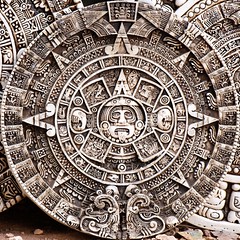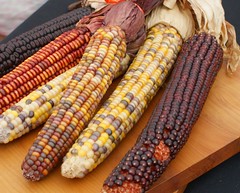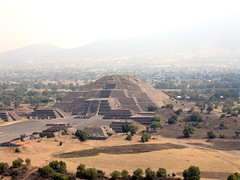| 7485751876 | Maya | Mesoamerican civilization concentrated in Mexico's Yucatan Peninsula and in Guatemala and Honduras but never unified into a single empire. Major contributions were in mathematics, astronomy, and development of the calendar. (Height from 200-900 CE) |  | 0 |
| 7485751877 | Moche | A civilization of the north coast of Peru (200-700 C.E.). An important Andean civilization that built extensive irrigation networks as well as impressive urban centers dominated by brick temples. Farmed maize, beans, and squash adopted from Mesoamerica. |  | 1 |
| 7485751878 | Meroe | Capital of a flourishing kingdom in southern Nubia from the 300 BCE to 100 CE. In this period Nubian culture shows more independence from Egypt and the influence of sub-Saharan Africa. Deforestation contributed to its decline. |  | 2 |
| 7485751879 | Axum | An African empire located in what is now Eritrea & Ethiopia c. 50 CE that was a naval and trading power; Christianity became the kingdom's religion. Brought down by environmental problems. |  | 3 |
| 7485751880 | Bantu | A major African language family. Collective name of a large group of sub-Saharan African languages and of the peoples speaking these languages. Famous for migrations throughout central and southern Africa. |  | 4 |
| 7485751881 | Ezana | King who ruled Axum and converted to Christianity in the fourth century CE about the same time as Constantine. Christianity persists in the region down to today. |  | 5 |
| 7485751882 | Jenne-jeno | One of the first urbanized centers in western Africa. A walled community home to approximately 50,000 people at its height. Evidence suggests domestication of agriculture and trade with nearby regions. |  | 6 |
| 7485751883 | Batwa | Forest-dwelling people of Central Africa who adopted some of the ways of their Bantu neighbors while retaining distinctive features of their own culture; also known as "Pygmies." |  | 7 |
| 7485751884 | Khoikhoi | A people of South Africa who adopted cattle and sheep herding (as well as iron working) as they came in contact with Bantu-speaking people from West Africa. |  | 8 |
| 7485751885 | Continuous Revelation | A Bantu notion of religious belief in which, contrary to the Bible or the Muslim Quran, the people believed in the possibility of constantly receiving new messages from the world beyond. | 9 | |
| 7485751886 | Mesoamerican Agriculture | Agriculture in Central American primarily focused around maize, beans, chili peppers, and squash. |  | 10 |
| 7485751887 | Mesoamerican Trade | Back as far as the Olmecs, Central America peoples traded things like jade, serpentine, obsidian tools, ceramic pottery, shell ornaments, stingray spines, and turtle shells. |  | 11 |
| 7485751888 | Maya Writing | The Mayans wrote on stone, bark paper, and on deerskin. |  | 12 |
| 7485751889 | Tikal | The largest ancient Mayan city in the northern part of what is today Guatemala; traded items were jade, gold, shells, feathers, and cacao (as well as food like maize, beans, and squash). |  | 13 |
| 7485751890 | Teotihuacan | The first major metropolis in Mesoamerica in what is today Mexico; collapsed around 800 CE. It is most remembered for the gigantic "pyramid of the sun". |  | 14 |
| 7485751891 | Monte Alban | A major Zapotec city; engaged in diplomacy with Teotihuacan. |  | 15 |
| 7485751892 | Chavin | The first major urban civilization in South America (900-250 BCE). Its capital was located high in the Andes Mountains of what is today called Peru. |  | 16 |
| 7485751893 | Chavin de Huantar | A center for a major religious movement in the Andes c. 900 BCE dedicated to jaguar, crocodie, and snake deities that helped to unify coastal and highland Peru. |  | 17 |
| 7485751894 | Lords of Sipan | A gravesite was discovered of Moche leaders dating to about 290 CE. Archaeologists referred to them as this. |  | 18 |
| 7485751895 | Tiwanaku | Name of capital city and empire centered on the region near Lake Titicaca in modern Bolivia (375-1000 C.E.). |  | 19 |
| 7485751896 | Anasazi | Important culture of what is now the southwest of the US (700- 1100 C.E.). Centered on Chaco Canyon in New Mexico and Mesa Verde in Colorado; they built multistory residences and worshiped in subterranean buildings called kivas. |  | 20 |
| 7485751897 | Pueblo Bonito | Important great house in Chaco canyon; trade networks linked together various pueblos that traded things like buffalo hides, copper, turquoise, seashells, macaw feathers, and coiled baskets. |  | 21 |
| 7485751898 | Mound Builders | Native american civilizations of the eastern region of north america that created distinctive earthen works that served as elaborate burial places. |  | 22 |
| 7485751899 | Cahokia | A commercial center for regional and long-distance trade in North America located near modern St. Louis. Its hinterlands produced staples for urban consumers. In return, its crafts were exported inland by porters and to North American markets in canoes. |  | 23 |
AP World History - Strayer Chapter 6 Flashcards
Primary tabs
Need Help?
We hope your visit has been a productive one. If you're having any problems, or would like to give some feedback, we'd love to hear from you.
For general help, questions, and suggestions, try our dedicated support forums.
If you need to contact the Course-Notes.Org web experience team, please use our contact form.
Need Notes?
While we strive to provide the most comprehensive notes for as many high school textbooks as possible, there are certainly going to be some that we miss. Drop us a note and let us know which textbooks you need. Be sure to include which edition of the textbook you are using! If we see enough demand, we'll do whatever we can to get those notes up on the site for you!

